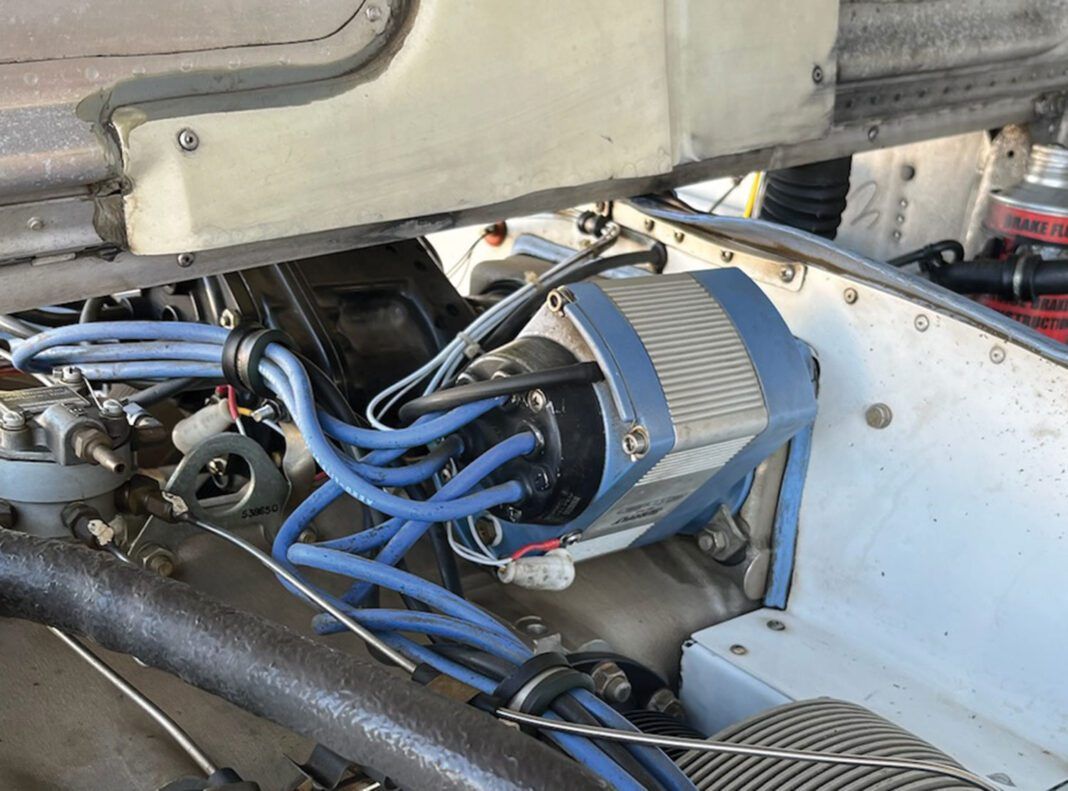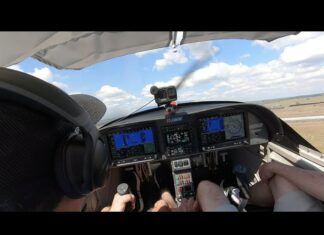The long-term report on the Electroair electronic ignition retrofit on a Lycoming O-360 engine (October 2023 Aviation Consumer) proved there is a significant advantage over traditional magnetos, but there are also significant differences between the Electroair and the SureFly electronic ignition. I’ve been flying with one SureFly electronic mag installed on the Continental IO-470-N engine (I installed it myself with the supervision of my A&P) on a Beech Debonair. Here’s my field report.
Advancing the timing
We know from experience with air-cooled auto engines (old Volkswagens as one example) that advancing the ignition timing causes the engine to run hotter. This is likely due to more complete burning of the fuel/air mixture and the longer duration of the hot gases in the cylinder. SureFly’s installation requires a digital engine monitor to monitor temperatures if the spark advance is to be enabled, while Electroair’s does not. Apparently, since Electroair does not advance the spark quite as much as the SureFly, Electroair did not think digital engine instrumentation or 100-octane fuel was necessary with their installation. SureFly included those requirements likely due to the slightly higher maximum spark advance. Moreover, I don’t conclude that SureFly’s engine monitor requirements make the SureFly inferior—buyers investing in ignition upgrades likely have them anyway.
The same spark advance will result in the same temperature increases regardless of the source of the spark. Advancing the spark reduces the detonation margin, so SureFly requires 100-octane fuel when using the spark advance feature. Does a hotter, longer-duration spark result in better combustion, or once the combustion starts, does it matter how it got started? It’s kind of like the Ford versus Chevy argument. I have flown my Debonair up to 19,000 feet with the old magnetos without experiencing any misfiring, so I am not convinced that the hotter spark is needed for most normally aspirated engines.
A good performer
From my experience flying with the SureFly for over three years, three features stand out. I enjoy quick and easier engine starts and between 3 and 5 knots faster cruise speeds at cruise power settings with a constant-speed propeller. Pre-takeoff runups at 1700 RPM demonstrate the ignition advance feature is working, as the mag drop for the magneto is around 110 RPM with a smooth engine, while the mag drop is only around 10 RPM with a smooth engine on the SureFly, as shown by an accurate digital tachometer.
It’s worth mentioning that advancing ignition timing will result in a lower fuel flow for fixed-pitch propellers if setting power by RPM, while resulting in additional airspeed with a constant-speed propeller at the same manifold pressure and RPM. In my installation with a constant-speed propeller, I observe 3 to 5 knots higher airspeed at cruise power settings. So with either electronic ignition set up to advance the spark timing, less fuel will be burned on a trip. An engine with a fixed-pitch propeller will have less fuel flow at the same RPM while with a constant-speed propeller, higher airspeed at the same power setting results in a shorter block to block time, thus saving fuel.
In the long-term Electroair report, the author said that SureFly hasn’t claimed any appreciable fuel savings, but that’s in conflict with the company’s claims on its website, where it says “SureFly customers utilizing SureFly Variable Timing report fuel savings of 0.25 to 1.5 GPH depending on leaning practices and each aircraft’s particular performance and typical mission profiles.”
To wrap it up, SureFly’s FAA-certified system is priced significantly lower than Electroair’s, starting at $1755 for four-cylinder engines and $2085 for six-cylinder engines, plus it has an easier installation process. But it doesn’t have as long or hot of a spark, though it’s still superior to a traditional magneto. It also has a lower TBO (2400 hours versus 3500 for the Electroair), though it still exceeds most engine TBO times. Plus, using the spark advance feature requires 100-octane fuel and a digital engine monitor.
We originally reported on electronic magnetos in the August 2019 issue of Aviation Consumer magazine. If you’d like to share your experience with an ignition retrofit, drop us a line.


